How to choose the right RCD by capacity: existing types of RCD + subtleties of choice
The increase in the number of household appliances increases the risk of electrical injury during its operation. Therefore, it is recommended to install protective systems in the premises that prevent current leakage.
To ensure stability and safety of using devices, it is necessary to correctly select and install an RCD. Before buying, you should evaluate the operational features of the room, the type of electrical wiring and determine the connection scheme of the protective device.
You doubt that you will cope with the task? We will tell you how to choose an RCD, what parameters it is important to consider to ensure the normal functioning of the equipment, and which manufacturers can be trusted.
The content of the article:
The principle of operation of the RCD
To prevent accidental electric shock when in contact with household and industrial electrical appliances, it was invented residual current device.
It is based on a transformer with a toroidal core, which monitors the current strength on the "phase" and "zero". If its levels diverge, then the relay is activated and the power contacts are disconnected.
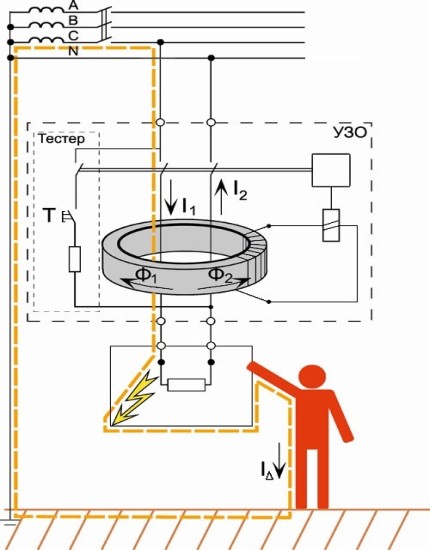
Normally, any electrical appliance has a leakage current. But its level is so low that it is safe for the human body.
Therefore, the RCD is programmed to operate at the current value that can cause electric shock to people or lead to equipment breakdown.
For example, when a child sticks a bare metal pin into a socket, electricity will leak through the body, and the RCD will turn off the light in the apartment.
The response speed of the device is such that the body will not experience any negative feelings at all.
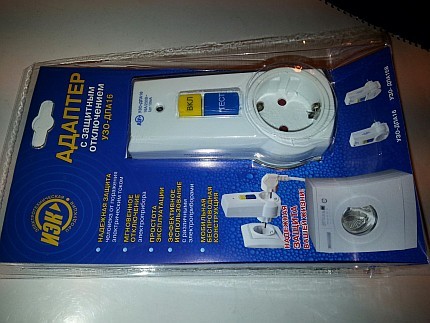
Depending on the power of the connected equipment, the presence of intermediate protective devices and the length of the wiring, RCDs with different limiting values of differential currents are used.
The most common in everyday life are protective devices with a threshold level of 10 mA, 30 mA and 100 mA. These devices are enough to protect most residential and office premises.
It should be remembered that the classic RCD does not protect the wiring from a short circuit and does not disconnect the power contacts when the network is overloaded. Therefore, it is desirable to use these devices in combination with other electrical protection mechanisms, for example, circuit breakers.
Safety device classification
Despite the simplicity of the internal structure, the choice of RCD models on the market is quite large. Each device has a specific set of technical parameters that cannot be adjusted during operation.
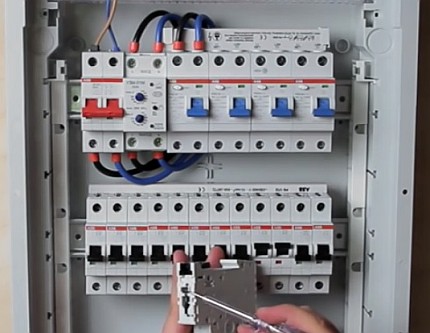
To facilitate the selection of RCDs, consideration should be given to the classification options for these devices.
- By speed RCD mechanisms are divided into ordinary and selective models. The former disconnect the power contacts almost instantly, and the latter with a delay. Selective RCDs are used in multilevel systems where the sequence of operation is important.
- By type of relay RCDs are divided into electromechanical, breaking the contact mechanically, and electronic, preventing the supply of current using a semiconductor circuit.
- By type of current. RCD type AC is disconnected from AC leakage, type A is disconnected from AC and DC.
- By additional functions: without protection against network congestion and with it. An RCD with a short-circuit or high-current trip mechanism is usually called difratomata.
- By design. There are RCDs mounted on a DIN rail, on a wall, as well as devices in the form of a socket, portable device, adapter.
- By operating voltage: for 220V, 380V, combined.
- Volatility. There are UZO models capable and incapable of disconnecting the power load in the absence of operating voltage.
- By the number of connected poles: bipolar and four-pole.
For the right choice of RCD, it is not enough to know its technical characteristics. In order for the device to effectively fulfill its protective function, it is necessary to take into account the length of the home wiring, the power of the connected devices and some other parameters when buying it.
Rules for choosing protective devices
Before buying an RCD, you can visit the forums of electricians to seek advice on the reliability of a particular manufacturer.
However, it is necessary to select the maximum and threshold current, the number of poles, the mounting scheme and other technical parameters individually, based on the characteristics of the room and the electrical wiring.
Power selection
The residual current device does not control the power consumption of the connected devices, but has limitations on the maximum transmitted current.
Therefore, it is important to know how choose RCD by powerin order to correctly take into account the energy consumption of each group of rooms when installing the wiring diagram. Indeed, if the rated current exceeds the threshold value for the device, it can burn out.
In apartments and private houses usually use a single-level or two-level RCD system. Each of them has its own characteristics.
Single-level circuit with a single RCD - calculation of the rated current is based on the total power of the devices connected to the network at the same time.
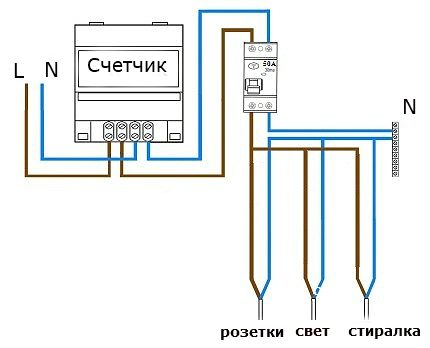
For example, when the power consumption of a washing machine is 2.4 kW, lighting is 1.1 kW, and other devices are 2.8 kW, an RCD must pass (2400 + 1100 + 2800) / 220 = 28 A.
In this case, at a rated current of the residual current device of 30 A, it will not burn out even with the simultaneous operation of all household appliances and lighting.
When installing a single RCD, there may be a problem with finding the breakdown location. In whatever room there is a leakage of current, electricity will be knocked out throughout the apartment. Therefore, it is better not to save and mount an extensive protection system.

The branched single-level circuit of the RCD installation. In this situation, the wires from the meter using a special bus branch into several groups, each of which is controlled by a separate protective device.
The calculation of the rated current for each RCD with a branched single-level system is carried out separately. In this case, the maximum power of the devices potentially connected to the device is taken into account.
For example, when connecting exclusively to a UZO a washing machine with an energy consumption of 2.4 kW, its rated current will have to be at least 2400/220 = 10.9 A.

Two-level RCD system considered optimal in terms of safety and maintainability.
Its first level is installed at the entrance to the apartment and provides fire safety. The rated current of this protective device must not be lower than the maximum capacity of the meter.
The second level of energy protection is placed on individual consumer groups. It can be rooms, floors, extensions, street lighting, single outlets.
Second-tier devices are usually cheaper and have a lower rated current. The sum of its values for all installed devices should be less than that of the basic RCD at the entrance to the room.
For example, with protective devices of the second level with a rated current of 10 A, 16 A and 16 A, you will need to mount a device with a minimum throughput of 10 + 16 + 16 = 42 A.
The advantage of a two-level system is the ability to disable certain groups of electrical appliances in the presence of current leakage. This allows you to repair equipment or find problems with insulation in the wall without turning off the entire apartment.
Calculation of the required differential current
Each RCD model is triggered at a certain level of differential current arising between the two cores of the electrical cable. Therefore, it is important to know how to choose an RCD with safe characteristics for a home.
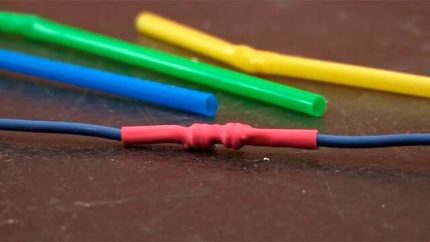
When calculating the threshold differential current of the RCD, several parameters are taken into account at once:
- wire length to power consuming device;
- natural leakage of current in technology;
- power devices.
The general formula for determining the Diftok is as follows:
IΔ = (0.4Icalc (A) + 0.01L wire (m)) / 1000
For example, take the above-described circuit of electrical appliances and their power. Let the cable length for each group of household devices be 12 m.
The calculation of the RCD parameters for the above scheme will be as follows:
- IΔmash= (0.4 * 2800/220) + 0.01 * 12 = 5.21 mA;
- IΔos= (0.4 * 1100/220) + 0.01 * 12 = 2.12 mA;
- IΔrosis= (0.4 * 2400/220) + 0.01 * 12 = 4.48 mA.
According to the recommendations, the threshold current of the device should be three times greater than the calculated differential. What is connected with the increased electrical load in the first second of turning on household appliances.
If this rule is not observed, then frequent false positives of RCDs are possible, which will create problems for consumers.
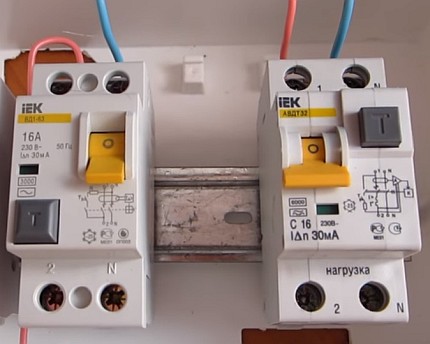
Therefore, for each group of electrical appliances under consideration, the minimum value of the threshold differential current will be as follows:
- 5.21 mA * 3 = 15.63;
- 2.12 mA * 3 = 6.36;
- 4.48 mA * 3 = 13.45.
That is, for a washing machine and a group of outlets, an RCD with a 30 mA differential is needed, and for a lighting group, a 10 mA device will be enough.
Such characteristics of the devices will ensure the normal functioning of the equipment and protect people from electric shock. It is not recommended for these purposes to install an RCD with a parameter above 30 mA.
With a two-level circuit, the leakage current of the main protective device located at the entrance to the room is selected within 100-300 mA.
These RCDs are triggered by the breakdown of old or damaged insulation inside the walls. Thus, the room is protected from fire in case of hidden defects in the wiring.
RCD trip time
In a two-level system, the occurrence of a significant current leak can lead to the operation of the protective device at both levels.
To exclude such a situation, you can set the base selective protective device. Its response time is 150-500 ms, which is several times longer than the standard RCD (20-40 ms).
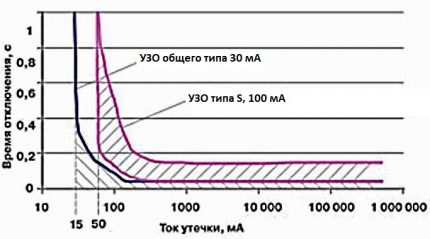
With this selection of devices, only the power supply at the second level will be turned off, which will not lead to the disappearance of electricity in the entire apartment.
As for conventional RCDs, the shorter their reaction time, the safer they are. This fact must be considered when buying them.
Choosing a reliable manufacturer
The direct protective function of the RCD is little dependent on its manufacturer. A device of any company, with the exception of clearly defective models, will turn off the power when the differential current exceeds a threshold value.
Cons of protective devices may include the following:
- false positives;
- increased buzz;
- heating during operation;
- the creepiness of the case, which can lead to damage during installation;
- short warranty period.
The more reliable and authoritative the RCD manufacturer, the less of the listed disadvantages will be its equipment.
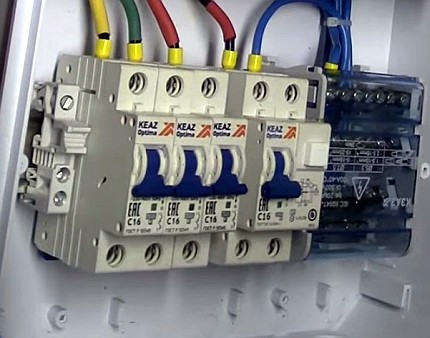
However, with the growth of quality, the price will increase.
The most reliable manufacturers of protective devices are:
- Legrand;
- ABB;
- AEG;
- KEAZ;
- Schneider Electric;
- Siemens
- DEKraft;
- General Electric.
When buying an RCD, it should be remembered that this device is not installed to comply with building codes, but to preserve the health and life of loved ones.
Therefore, do not buy products of dubious manufacturers. They can not only fail, but they themselves can lead to a fire hazard situation.
There are other criteria for selecting residual current circuit breakers, but they are of much less importance for consumer safety.
General tips for selection and installation
In addition to the criteria for selecting an RCD, there are general useful recommendations when buying and installing this equipment.
They will help you not to make a mistake and immediately acquire a model suitable for a particular apartment or house.

The selection tips are as follows:
- it is recommended to take an RCD, which, when triggered, turns off not only the phase, but also “zero”;
- in the framework of the contour controlled by the device there should not be grounded electrical appliances;
- the device should operate with short-term voltage drops of 50% of the nominal, which can occur in the first instants of a short circuit;
- RCD terminals should be made of weakly oxidizable material and equipped with a reliable system for fixing wires;
- the advantage when buying should be given to devices with the function of protection against short circuit and overload;
- RCDs of the second level can not be installed on safe equipment groups, for example, on ceiling lighting sources;
- it is recommended to install devices with a threshold differential of 10 mA on showers and a jacuzzi;
- you should pay attention to the possibility of connecting aluminum wires to the device - some devices do not work with them correctly.
You can install the right RCD yourself. This process is not much different from mounting an outlet or switch.
It is important to carefully consider the wiring diagram and do as indicated on it.
Detailed information on the rules and schemes for connecting RCDs in an apartment and a house is presented in this article.
Conclusions and useful video on the topic
Selection of RCDs with consideration of options, as well as an explanation of the features of various schemes for their connection:
RCD selection rules, part 1:
RCD selection rules, part 2:
The choice of a suitable RCD, especially when installing two-level systems, is best left to professionals.
It’s easier to once invite an experienced electrician to your house and consult with him than to change unsuitable goods in the store. After all, the health and lives of loved ones who will use household electrical appliances are at stake.
Have something to supplement, or have questions about choosing a protective device? You can leave comments on the publication, participate in discussions and share your own experience in selecting RCDs for a house or apartment. The contact form is located in the lower block.

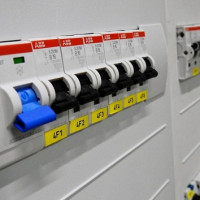 What is an RCD: device, principle of operation, existing types and labeling of RCDs
What is an RCD: device, principle of operation, existing types and labeling of RCDs 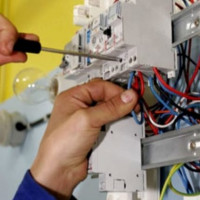 RCD for a water heater: selection criteria + schemes and connection rules
RCD for a water heater: selection criteria + schemes and connection rules 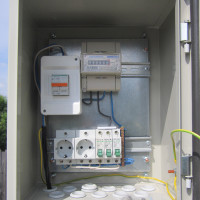 Box for electric machines: types of boxes and their features + the nuances of selecting and filling the box
Box for electric machines: types of boxes and their features + the nuances of selecting and filling the box 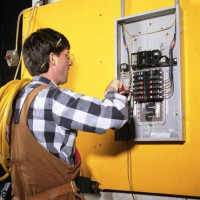 How to connect an RCD: circuits, connection options, safety rules
How to connect an RCD: circuits, connection options, safety rules 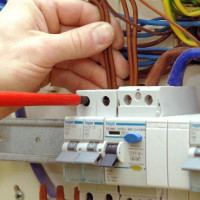 Differential circuit breaker: purpose, types, marking + selection tips
Differential circuit breaker: purpose, types, marking + selection tips 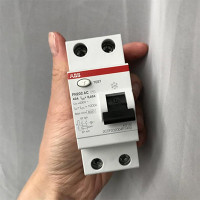 Machine selection by load power, cable cross-section and current: principles and formulas for calculations
Machine selection by load power, cable cross-section and current: principles and formulas for calculations  How much does it cost to connect gas to a private house: the price of organizing gas supply
How much does it cost to connect gas to a private house: the price of organizing gas supply  The best washing machines with dryer: model rating and customer tips
The best washing machines with dryer: model rating and customer tips  What is the color temperature of light and the nuances of choosing the temperature of the lamps to suit your needs
What is the color temperature of light and the nuances of choosing the temperature of the lamps to suit your needs  Replacement of a geyser in an apartment: replacement paperwork + basic norms and requirements
Replacement of a geyser in an apartment: replacement paperwork + basic norms and requirements
Many people doubt whether to put an RCD in the house. I will say this: if there is grounding, then it is necessary, if not, all the more so. For myself, I determined that the most preferred is the RCD of IEK. A big plus is the performance tested by time. The price is cheaper than most brands. If you find cheap RCDs from other companies, then most likely they will be "left". RCD IEK can be easily purchased in stores.
I believe that it is necessary to put an RCD. It is better to spend a little more money once during installation or repair than to spend large sums later on to repair equipment, etc. For several years of operation, there were no failures in electricity. But anything can be. As far as I know, the installation of RCDs has become mandatory in new homes. In my opinion, this is absolutely true.
Good afternoon, Peter.
The obligation to protect networks, UZO people in houses under construction is an exaggeration. The PUE dedicated “Section 7” to protective shutdown, obliges to provide a device if the time of disconnection of a group network by an automatic fuse exceeds the standard. If the mentioned devices "cope with their responsibilities", RCDs can be omitted. For sockets that supply portable power, installation of an RCD is simply recommended.
The categorization of the wording does not differ and the Instruction governing the power supply of frequent homes.But it requires designers involved in electrical safety to make a decision on RCDs - it implies a detailed conclusion, for what reasons you can do without a device or, on the contrary, highlight the reasons that prompt installation.
Screenshot with exact wording - attached.